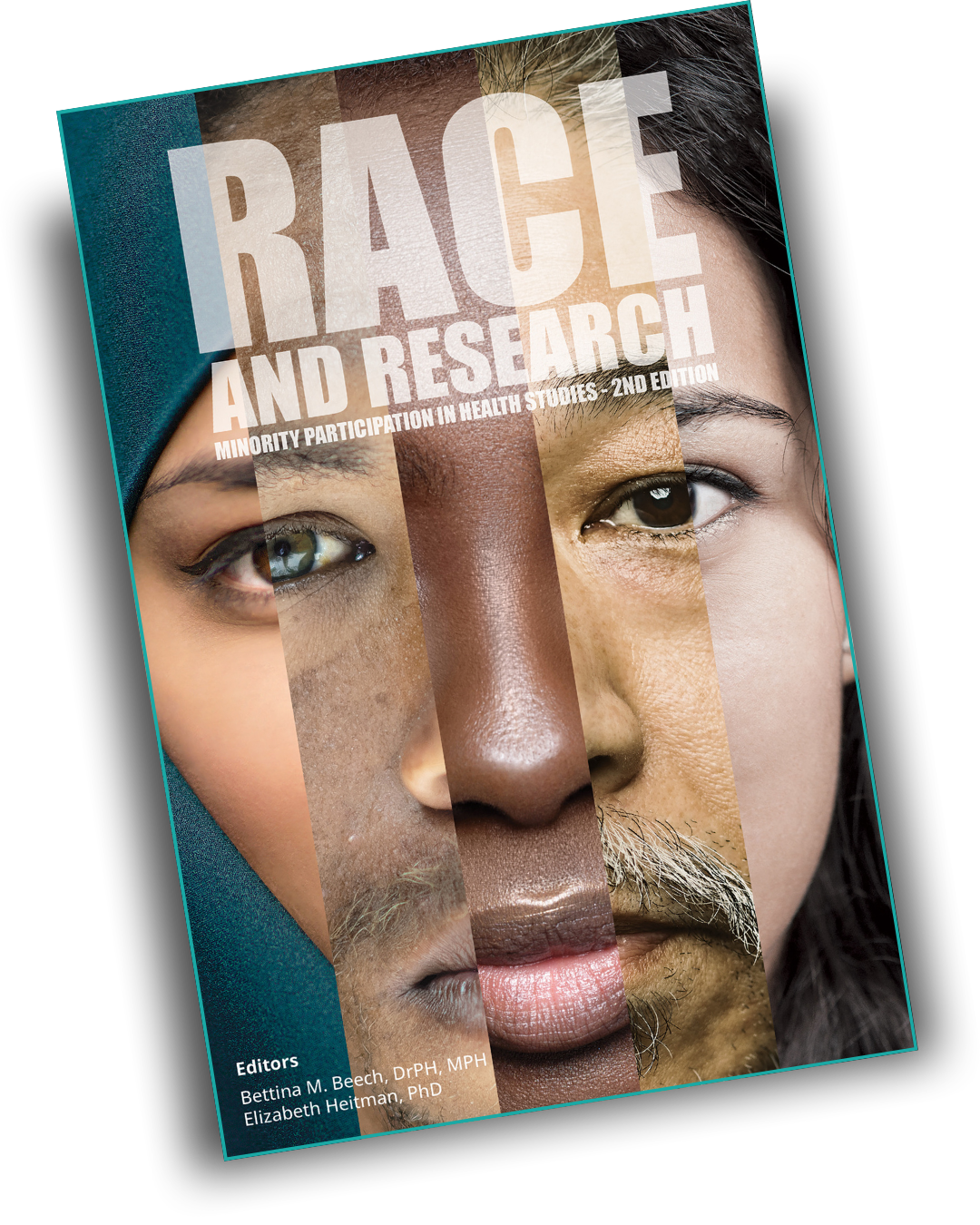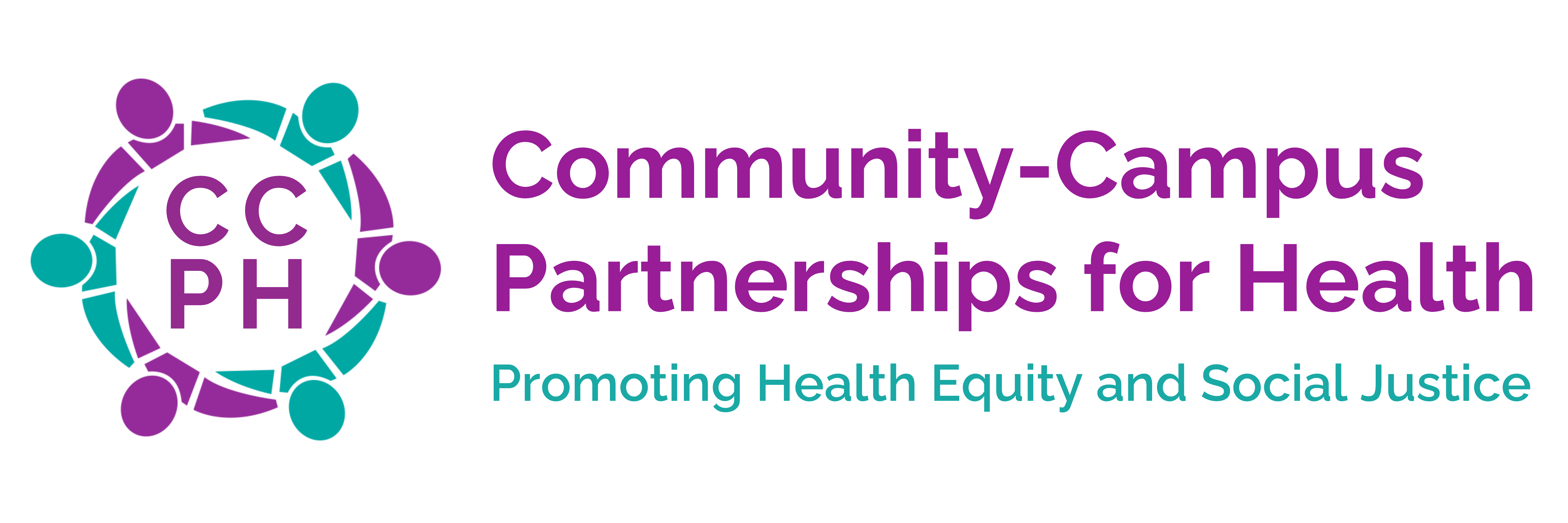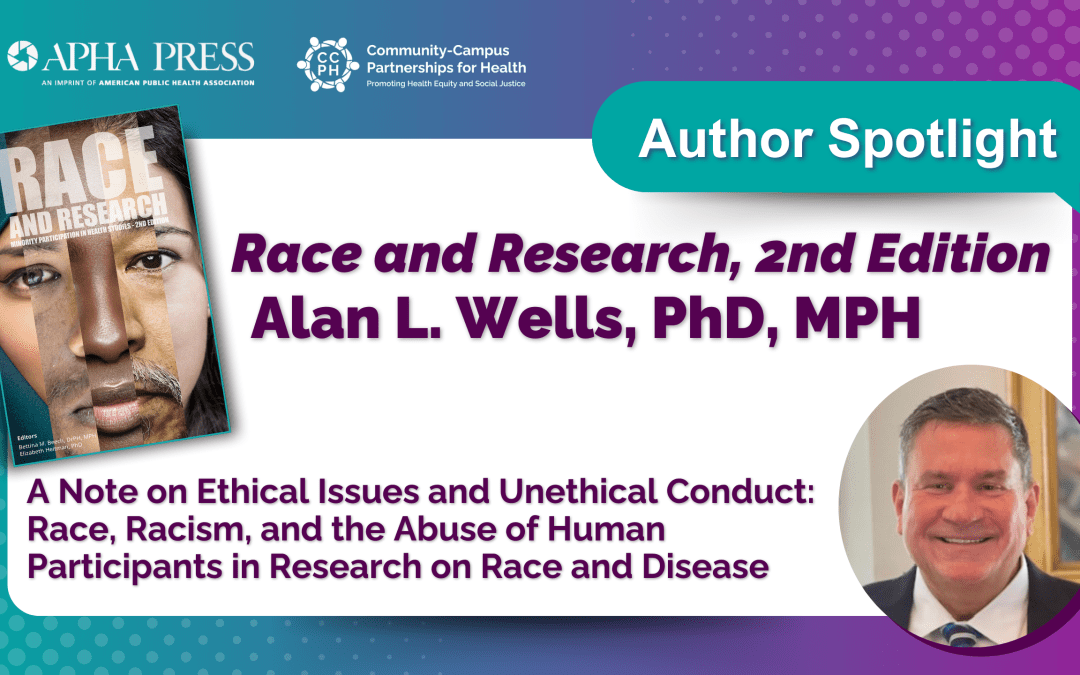CCPH Author Spotlight from Race and Research, 2nd Edition: A note from Dr. Alan Lee Wells on Ethical Issues and Unethical Conduct: Race, Racism, and the Abuse of Human Participants in Research on Race and Disease.
Twenty years have passed since the first publication of “Race and Research: Perspectives on Minority Participation in Research.” To update the ethics chapter in the 2nd edition, we had to choose representative examples and cases that reflected enormous sociocultural, scientific, and technological changes. Since 2004, public awareness of racism in society and its impact on human health has increased. Like most catalysts for ethical and cultural changes, it responded to public documentation of blatant abuses, such as the murder of George Floyd, resulting in the Black Lives Matter movement. In 2004, The Human Genome Project first mapped human DNA, and many scientists posited that this held great promise for technological advances in precision medicine and the development of new treatments. However, these advancements were shadowed and embedded in a terrible history of the misuse and manipulation of vulnerable populations associated with collecting serum samples, most notably, the Tuskegee Study by the US Public Health Service. As public health historian Jim Jones noted, “Bad Blood” was used to explain the debilitating effects of infection with the syphilis spirochete, and participants in the Tuskegee Study were denied medical treatment after the discovery of penicillin as a cure to maintain a treatment-naive cohort. Based on a racist hypothesis that syphilis would somehow present differently in African-Americans, the participant’s poverty, low health literacy, and isolation were considered a uniquely rare opportunity to create a natural control group. The promise of new, individualized treatments based on genetic discoveries and innovation also remains contingent on a patient’s ability to access healthcare and technology, begging the question of who benefits in health systems still marked by inequality.

Over the last two decades, community engagement and purposeful efforts to understand study participants’ differing ways of knowing and understanding themselves and their bodies have increased. Mandates for community engagement and inclusive practices in federally funded research, however, are still shadowed by a history of abuses of indigenous groups and isolated populations. Specifically, clear messages from researchers about the study, its aims, and how the researchers will use collected data and biological material for analysis lags. The 2024 chapter discusses the Havasupai Tribe v. the Arizona Board of Regents legal court case. This case traces the non-disclosure and deceptive practices by researchers collecting serum samples for genetic research and disregarding tribal worldviews, sensibilities, and ways of seeing the corporeal body. The Havasupai case mirrors a long history of researchers objectifying their tribe. It underscores a passive bias that Indigenous groups do not deserve or are incapable of understanding a full explanation of scientific inquiry, procedures, and analysis with their genetic material.
Since the 1960s, anthropological and sociological research with the Havasupai was marked by such objectification, using their pristine genealogical records to analyze variables for early human development, such as sex ratios matched with coital frequency without explicit consent or explanation of their scientific inquiry. Physical anthropologists posed cultural questions to derive biological models. The high prevalence of diabetes mellitus in tribal groups after resettlement and the mandate to discover genetic predispositions for diseases accelerated these biased practices. In the case of the Havasupai, the completely legal but vague consent forms allowed a wide range of analysis from serum samples on HLA polymorphisms and genetic markers for diseases, especially disorders such as schizophrenia. Researchers approached the tribe to get serum samples, leveraging these valuable samples from an isolated population while telling the tribe they were there to help with the raging problem of diabetes mellitus type 2. Arizona State University initiated healthy eating programs alongside large-scale genetic research without understanding the Havasupai notion of the body and the offense of using their biological material to look for markers of stigmatizing disease with animal models. In the end, the tribe banished researchers from the reservation, and the misinformation launched many new protections and discussions about indigenous data sovereignty. Ultimately, it is all about trust, and researchers must message, disclose, understand, and have research approved by those it impacts.













